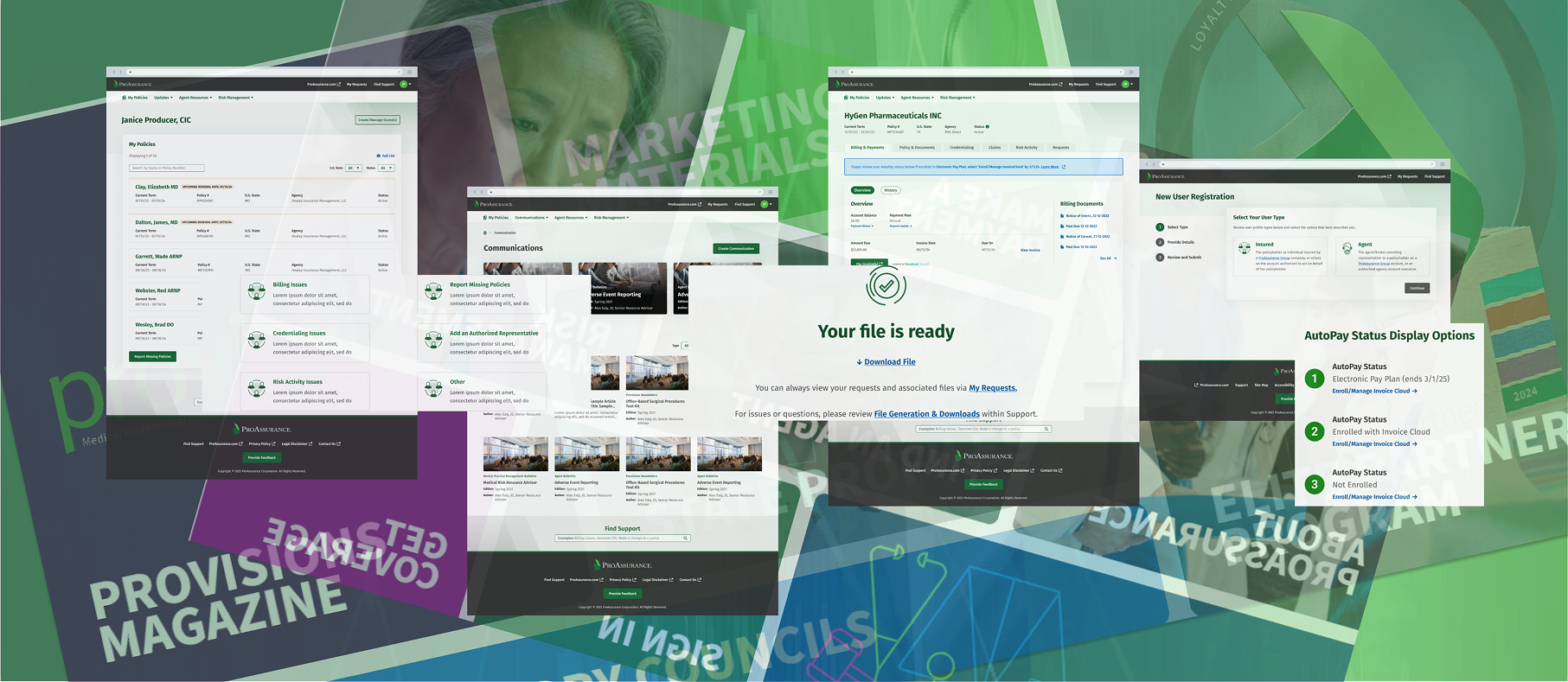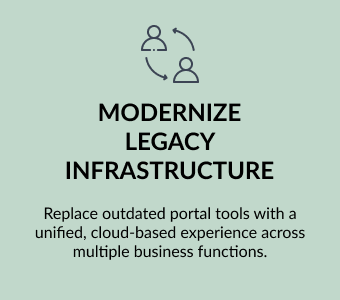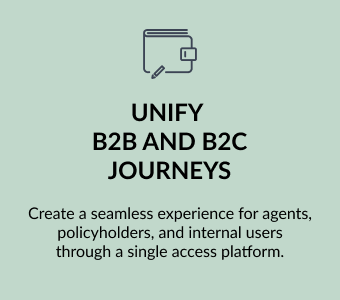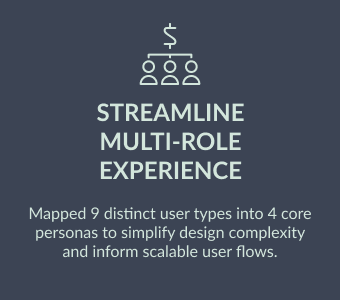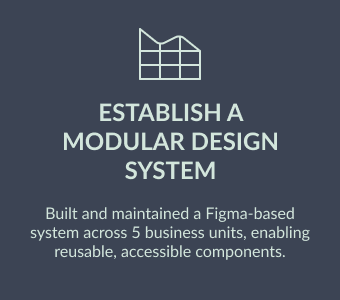From Legacy System to Digital Solution
Designing a scalable, multi-user experience while shaping a cohesive digital ecosystem through research, systems, and strategy.
Company
ProAssurance
Role
Lead UX Designer
Team
Product Manager
Sr. Digital Experience Analyst
IT/Software Solutions Manager
Stakeholders
Sr. Business Operations & Logistics
VP Digital Experience & Strategy
Responsibilities
End-to-End UX Research & Design
Design System Scalability & Management
Agile Product Collaboration
Stakeholder & Cross-Functional Alignment
QA & Performance Insights
Redesigning a Legacy Portal into a Unified, Scalable Digital Experience
ProAssurance’s original portal experience was fragmented and inconsistent, with separate access points for agents and policyholders across various product lines. The opportunity—and challenge—was to reimagine this system as a cohesive, modern platform that could support multiple user roles, internal teams, and long-term digital growth.
As Lead UX Designer, I drove the full UX strategy and execution—from research to design system development—collaborating closely with business stakeholders, IT leads, and an external UX consultancy to ensure both usability and scalability.
Multi-User Focus | Consolidated insights from 9 distinct user roles into 4 streamlined personas to inform experience design
Systematized Design | Built a flexible Figma-based design system serving 5 business units with consistent visual standards
Insight-Driven | Leveraged analytics, usability feedback, and QA testing to iterate and guide product evolution

Success Snapshot
Multi-Role UX Consolidated from 9 to 4 Core Personas
→ Streamlined user journeys by redefining complex role-based access across business units into simplified, actionable archetypes.
Design System Deployed Across 5 Business Units
→ Established a modular, scalable Figma-based system that enabled consistent UI patterns, reducing design/development time across teams.
30% Reduction in User Friction Points (Post-QA Cycle)
→ Heuristic evaluations and design QA identified and addressed major usability issues prior to release, improving task completion and NPS.
Improved Cross-Functional Velocity in Agile Sprints
→ UX documentation, wireflows, and system components accelerated developer handoff and reduced back-and-forth during implementation.
Key Business Objectives
Modernizing Insurance Access Across Roles, Systems, and Product Lines
To support long-term digital transformation, ProAssurance aimed to centralize access to insurance services for both agents and insureds. This required streamlining operations, improving user access, and ensuring consistency across business units.
UX Objectives
Designing for Clarity, Consistency, and Long-Term Scalability
To establish strategic design principles to reduce user friction, support agile delivery, and build a scalable foundation for future iterations.

Challenges
1:
Inherited, Incomplete Design Handoff
Challenge:
Maintain and evolve externally produced designs that lacked scalability, consistency, and full UX coverage.
Solution:
Systematized | Built a modular, scalable design system to unify UI across business units
Consistent | Replaced or extended wireframes with flexible templates
Platform-Aligned | Designed all components to meet ServiceNow OOTB requirements

2:
ServiceNow Platform Transition
Challenge:
Integrate legacy tools and workflows into the new ServiceNow portal without breaking UX or backend stability.
Solution:
Native-First | Aligned all designs to ServiceNow’s native component library
Certified | Gained platform certification to guide UX decisions with technical feasibility
Stable | Minimized use of third-party solutions to ensure smooth platform upgrades

3:
Feature De-Scoping Due to Platform & Resource Constraints
Challenge:
Key UX improvements removed from scope due to limitations in resources and platform capabilities.
Solution:
Phased | Prioritized MVP for launch, deferring low-priority features to Phase 2
Documented | Captured and organized backlog items for future iteration planning
Data-Driven | Used analytics and CX insights to prioritize post-launch enhancements

4:
Lack of Centralized Support Content
Challenge:
No dedicated support center or contextual help to guide users through complex tasks, limiting self-service and increasing support call volume.
Solution:
Support-First | Introduced a persistent Support Center entry point sitewide, just above the footer
Contextual Help | Embedded inline guidance using support article links, meta prompts, and info icons near task-based actions
Usable Layouts | Applied UX principles to segment dense pages into structured blocks, improving clarity and task flow
results
Takeaways from the Experience
Modernizing with Purpose and Redesigning for Relevance
This project called for more than execution. It required strategic thinking, flexibility, and a systems-oriented approach to scale effectively across multiple user types, platforms, and internal teams. As the in-house Lead UX Designer, I was responsible for refining and expanding a partially handed-off product while aligning it with long-term business goals and platform limitations.
The result was more than a new portal. It became a foundation for consistent, scalable, and user-centered digital experiences across the ProAssurance Group.
Design Systems Provide Stability Across Teams
Creating a modular, platform-compliant design system allowed us to support five business units and prepare for additional brand integrations with minimal disruption.Staged Launches Enable Smarter Iteration
Rolling out the experience first to agents and then to insureds made it possible to test, adjust, and build trust incrementally before scaling further.Contextual Help Drives Self-Service Success
By integrating knowledge center links and task-specific support content directly into the interface, we reduced dependency on customer support and improved user confidence.Research Validated the Roadmap
User feedback after launch aligned closely with the features already planned for Phase 2. This confirmed the strength of the initial research and allowed the team to move forward without shifting priorities.
This work reinforced the value of designing with flexibility and foresight. Even within a legacy-driven environment, UX decisions grounded in strategy, clarity, and consistency can lead to scalable impact and long-term business value.
This case study represents a selection of work completed as Lead UX Designer on the ProAssurance Digital Experience Platform between 2022–2025. Most design elements cannot be shown, and business details have been modified or omitted to respect confidentiality. For an in-depth review, please contact me at sarahadi.work@gmail.com
